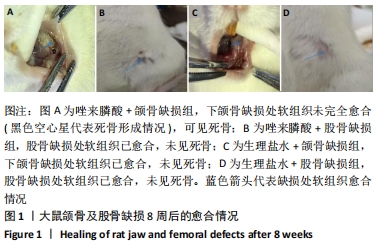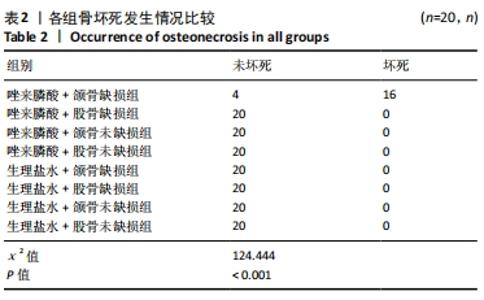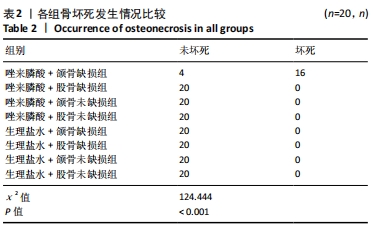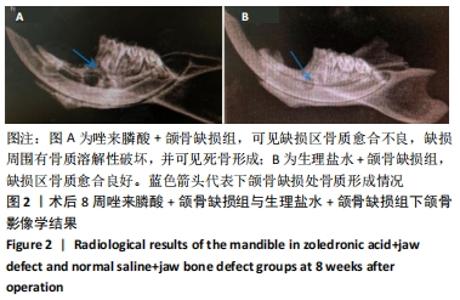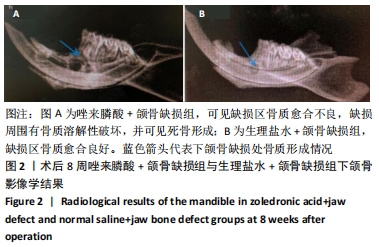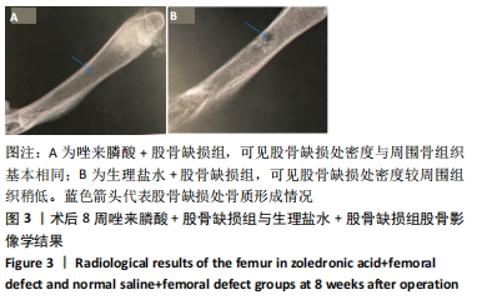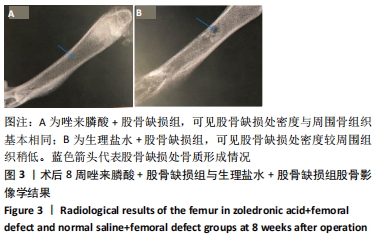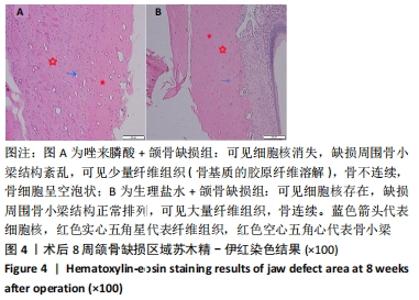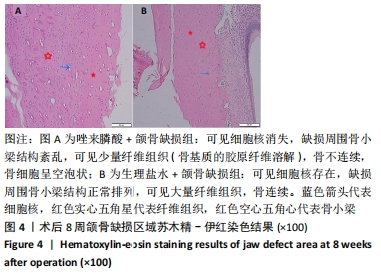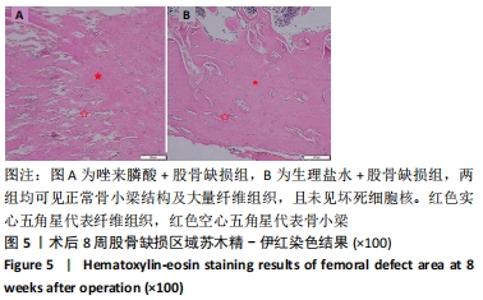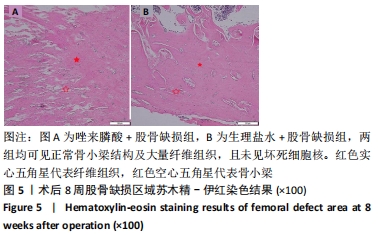[1] CREMERS S, DRAKE MT, EBETINO FH, et al.Pharmacology of bisphosphon- ates. Br J Clin Pharmacol. 2019;85(6):1052-1062.
[2] MARX RE. Pamidronate (Aredia) and zoledronate (Zometa) induced avascular necrosis of the jaws: a growing epidemic. J Oral Maxillofac Surg. 2003;61(9):1115-1117.
[3] FERREIRA LH, MENDONÇA KD, CHAVES DE SOUZA J, et al. Bisphosphonate-associated osteonecrosis of the jaw. Minerva Dent Oral Sci. 2021;70(1):49-57.
[4] OTTESEN C, SCHIODT M, GOTFREDSEN K, et al. Efficacy of a high-dose antiresorptive drug holiday to reduce the risk of medication-related osteonecrosis of the jaw (MRONJ): A systematic review. Heliyon. 2020; 6(4):e03795.
[5] 李萌宇, 王绍义.双膦酸盐相关性颌骨坏死的发生机制与风险评估[J].口腔医学,2017,37(9):849-853.
[6] TAMAOKA J, TAKAOKA K, HATTORI H, et al. Osteonecrosis of the jaws caused by bisphosphonate treatment and oxidative stress in mice. Exp Ther Med. 2019;17(2):1440-1448.
[7] 周骁, 钱玉芬. 组织工程骨修复骨缺损的稳定性:材料降解与新骨形成[J].中国组织工程研究,2015,19(12):1938-1942.
[8] 陈龙飞. 载阿仑膦酸钠的磷酸钙骨水泥修复兔股骨骨缺损的实验研究[D]. 郑州:郑州大学,2018.
[9] 吴世超,王颖姝,轩宾,等.建立双膦酸盐性颌骨坏死动物模型[J].中国组织工程研究,2017,21(36):5799-5805.
[10] 华洪飞, 王宁涛, 张文杰,等. 双膦酸盐致颌骨坏死的大鼠模型研究[J]. 口腔颌面外科杂志,2016,26(1):19-24.
[11] HAVIV Y, GELLER Z, MAZOR S, et al. Paincharacteristics in medication-related osteonecrosis of the jaws. Support Care Cancer. 2021;29(2):1073-1080.
[12] LIM HS, KIM CK, PARK YS, et al. Factors Associated with Increased Healing Time in Complete Femoral Fractures After Long-Term Bisphosphonate Therapy. J Bone Joint Surg. 2016;98(23):1978-1987
[13] CUEVAS-GONZÁLEZ MV, DÍAZ-AGUIRRE CM, ECHEVARRÍA-Y-PÉREZ E, et al. Prevalence of osteonecrosis of the jaw and oral characteristics of oncologic patients treated with bisphosphonates at the General Hospital of Mexico. J Korean Assoc Oral Maxillofac Surg. 2016;42(6): 365-369.
[14] KISHIMOTO H, NOGUCHI K, TAKAOKA K. Novel insight into the management of bisphosphonate-related osteonecrosis of the jaw (BRONJ). Jpn Dent Sci Rev. 2019;55(1):95-102.
[15] 赵悦涛. 双膦酸盐类药物性颌骨坏死的发病机制、临床表现、特殊检查、预防及治疗方法分析[J]. 中外医疗,2020,39(25):70-72.
[16] 许振起,龙丽,杨楠, 等. 双膦酸盐性颌骨坏死8例临床分析[J]. 山东医药,2016,56(2):72-73.
[17] CAMACHO-ALONSO F, LÓPEZ-JORNET P, VICENTE-HERNÁNDEZ A. Short-term effect of zoledronic acid upon fracture resistance of the mandibular condyle and femoral head in an animal model. Med Oral Patol Oral Cir Bucal. 2013;18(3):e421-426.
[18] SAKAGUCHI O, KOKURYO S, TSURUSHIMA H, et al. Lipopolysaccharide aggravates bisphosphonate-induced osteonecrosis in rats. Int J Oral Maxillofac Surg. 2015;44(4):528-534.
[19] TSURUSHIMA H, KOKURYO S, SAKAGUCHI O, et al. Bacterial promotion of bisphosphonate-induced osteonecrosis in Wistar rats. Int J Oral Maxillofac Surg. 2013;42(11):1481-1487.
[20] 潘剑, 王杞章, 刘济远. 双膦酸盐相关性颌骨坏死[J]. 华西口腔医学杂志,2017,35(1):29-36.
[21] 阳雪. 唑来膦酸对骨质疏松大鼠成骨细胞的作用研究[D]. 福州:福建医科大学,2019.
[22] 陈玉玲,许雄程,江俊, 等. 大鼠不同胚层来源成骨细胞生物学行为比较研究[J].实用口腔医学杂志,2019,35(2):196-200.
[23] IACOBONE M, CAMOZZI V, MIAN C, et al. Long-Term Outcomes of Parathyroidectomy in Hyperparathyroidism-Jaw Tumor Syndrome: Analysis of Five Families with CDC73 Mutations. World J Surg. 2020; 44(3):508-516.
[24] ENDO Y, FUNAYAMA H, YAMAGUCHI K, et al. Basic Studies on the Mechanism, Prevention, and Treatment of Osteonecrosis of the Jaw Induced by Bisphosphonates. Yakugaku Zasshi. 2020;140(1):63-79.
[25] MÂNEA HC, URECHESCU HC, BALICA NC, et al. Bisphosphonates-induced osteonecrosis of the jaw - epidemiological, clinical and histopathological aspects. Rom J Morphol Embryol. 2018;59(3): 825-831.
[26] MACIEL AP, QUISPE RA, MARTINS LJO, et al. Clinical profile of individuals with bisphosphonate-related osteonecrosis of the jaw: an integrative review. Sao Paulo Med J. 2020;138(4):326-335.
[27] KIM KY, ZHANG X, CHA IH, et al. Identifying a combined biomarker for bisphosphonate-related osteonecrosis of the jaw. Clin Implant Dent Relat Res. 2018;20(2):191-198.
[28] ALDHALAAN NA, BAQAIS A, AL-OMAR A. Medication-related Osteonecrosis of the Jaw: A Review. Cureus. 2020;12(2):e6944.
|

